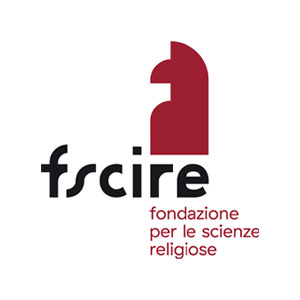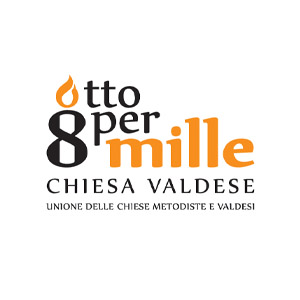Denmark
RELIGIOUS MINORITIES IN DENMARK
Also, there is a small Bahá’í community in Denmark, and in recent year the Forn Sidr religious community have begun practice based on old Nordic mythology.
Demography. With increasing immigration in the second half of the twentieth century and the first decades of the twenty-first, Denmark has a growing number of different religious denominations and faith communities. It is illegal to keep public registries on information about religious conviction or affiliation, except for members of the Church of Denmark. At Statistics Denmark, they have church statistics with information on the number of members of Church of Denmark, registrations and de-registrations as well as church actions such as baptisms, funerals, confirmations, weddings from 2006, and onwards. This is also the reason United Nations Statistics Division have no data on Danish religions.
The act of counting, categorizing and labelling is often criticized as an expression of a power relation between those who count and those who are being counted. It may involve nationality, ethnicity, religious practice, membership of organizations, or something else entirely. Considering that people may also have a religious belonging without formally being associated with a specific community, the numbers are rather difficult. Similarly, religious identity may be self-defined and unrelated to expectations and conventional assumptions about religious practice. Generally, however, the way of counting religious belonging is to calculate followers based on estimates reflecting the religious composition of immigrants’ countries of origin.
Based on such calculations, demographers of religion estimate about 256,000 in total numbers and 4.4% of the Danish population are Muslims. They constitute the largest religious minority group in Denmark. Most are immigrants or descendants of immigrants, and the largest groups have their origins in Turkey, Syria, Iraq, Lebanon, Pakistan, Somalia, Afghanistan, Bosnia, Iran and Morocco. According to numbers from 2017, there are 47,673 members of the Catholic Church in Denmark, up more than 25% since 2008. This is mainly due to immigration, most significantly from Poland and other European countries. Buddhists are estimated at 33.000, with approximately 90% with an immigrant background. Hindus are about 20.000, and they mainly have a background in Sri Lanka and India. There are an estimated 8.000-10.000 Jews in Denmark, most of whom live in Copenhagen. About half of the Danish Jews are members of the Danish Jewish community.
Controversies. In Denmark, there are a number of ongoing controversies and challenges that raises human rights concerns about freedoms and state limitations of minority religions and beliefs. Roughly considered since 11 September 2001, researchers in religion, law and human rights have spoken of a rising pressure to limit specific religious manifestations, particularly those of religious minorities. Central to this concern is the National Report on Denmark by the UN Special Rapporteur on Freedom of Religion and Belief, Heiner Bielefledt (2017). Arguably, there is a growing “juridification” of freedom of religion, by which the international standards on freedom of religion may potentially be at odds with the Danish developments, or at least, are not always fully reflected in Denmark.
The examples are abundant. In 2014, a prohibition of religious slaughter without prior stunning was introduced by an administrative order. This has called on international criticism, and the Special Rapporteur on freedom of religion or belief in his report on Denmark recommended that the Danish government ‘reconsider the ban on ritual slaughter.’ In June 2017, the Danish Parliament abolished the ban on blasphemy, which has caused concern to many religious minority communities, and has been used by extreme right wing agitators to burn the Quran. In 2018, Danish Parliament passed a general ban on face covering, which is seen as directly regulating the very few Muslim women wearing niqab or burka. In light of recent debates, which are ongoing in Denmark and most of Europe, the Jewish community has expressed serious concern that a prohibition of male circumcision will threaten the very existence of Jewish life in Denmark.
A considerable legislative agenda “aimed at religious preachers who seek to undermine Danish laws and values and who support parallel conceptions of law,” including rules on decorum, immigration, freedom of speech and criminalizing different aspects of perceived Islamic practice. This carries with it significant risk of discrimination, and some ambiguities on the lawfulness of certain religious practice, and questions about the necessity and proportionality of the legislation. Additionally, Muslims are increasingly marginalized against and a public political will to discriminate Muslims or even ban Islam altogether is growing. Niels Valdemar Vinding
RESOURCES

General information on minority issues (including some references to religious or belief ones) can be found at the page devoted to Denmark in Minority Rights Group International, World Directory of Minorities and Indigenous Peoples
A report on the legal system and government policies about freedom of religion (with some references to religious or belief minorities) is provided in U.S. Department of State, 2021 Report on International Religious Freedom: Denmark
See also United Nations, Report of the Special Rapporteur on freedom of religion and belief on his mission to Denmark (2016) (A/HRC/34/50/Add.1)
Information on religious communities, places of worship, religious marriage and other topics concerning State and religions relations, are provided by the Ministry for Ecclesiastical Affairs at https://eng.andretrossamfund.dk/. The text (in Danish) of the law on “religious communities outside the Church of Denmark” can be found at https://www.retsinformation.dk/eli/lta/2017/1533 and the list of the recognized religious organizations at https://eng.andretrossamfund.dk/religious-freedom-and-authorization/recognised-and-authorised-religious-communities-in-denmark
For an overview of the law and religion system, see:
N.V. Vinding, State and Church in Denmark, in G. Robbers (ed.), Church and State in the European Union, Baden-Baden: Nomos 2019, pp. 87-108
L. Christoffersen, Denmark, in G. Robbers & C. W. Durham (eds.), Encyclopedia of Law and Religion, Leiden: Brill, 2015 (the table of contents is available at https://referenceworks.brillonline.com/entries/encyclopedia-of-law-and-religion/denmark-COM_00000028
E. M. Lassen, Limitations to Freedom of Religion or Belief in Denmark, in Religion & Human Rights, 2020, 15(1-2), pp. 134-152
On the issue of Islam, see
B.A. Jacobsen & N.V. Vinding, Denmark, in O. Scharbrodt et al (eds.), Yearbook on Muslims in Europe, vol. 12, Leiden: Brill, 2019
N.V. Vinding, Annotated Legal Documents on Islam in Europe: Denmark. Leiden: Brill, 2020
N.V. Vinding, Discrimination of Muslims in Denmark, in M. Saral and S. O. Bahçecik, (eds.), State, Religion and Muslims. Between Discrimination and Protection at the Legislative, Executive and Judicial Levels. Muslim Minorities Series, Vol. 33, Leiden: Brill 2020, pp. 144-196.


 MENU
MENU CLOSE
CLOSE









